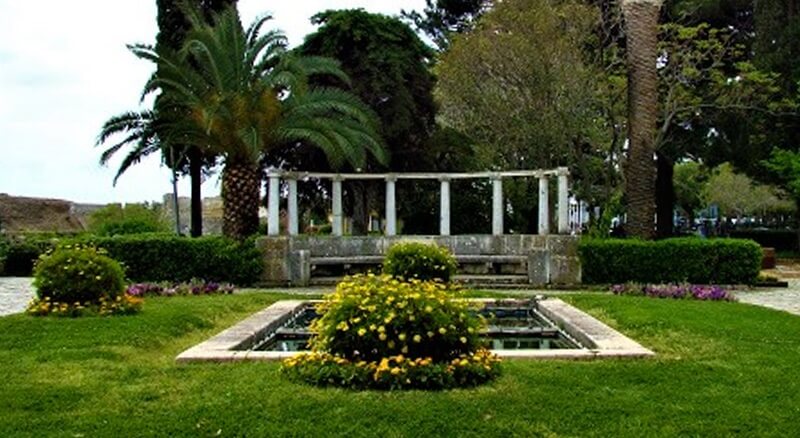
Projects of undergraduate students of the Department of Audio & Visual Arts, Ionian University - Winter Semester 2022-23
In the 16th Audiovisual Arts Festival, student works from the first two sections, 'reading' and 'writing', participate. The course was attended by Martha Gogaku, PhD candidate of the Department of Audio and Visual Arts of the Ionian University.
The 'Reading' section concerned the possibilities of mapping, understanding and highlighting human behavior and the diversity of elements of the urban environment in the public space. The theoretical framework was based on the study of Michel Foucault's 'Heterotopias', through which the philosopher formulated 6 principles for defining and distinguishing them into heterotopias of crisis and deviation. The field of study for the students was the Boschetto garden, a symmetrical Renaissance garden located in the northern moat of the Old Fortress and the Lower Square in Spianada. The request was the implementation of an audiovisual project that would consist of the synthesis of photographs and audio recordings from the garden area.
The 6 principles were presented and a request was made to draft one of their own principles based on the words used by Foucault to formulate them, since words are the basic raw material for philosophers to form the theological discourse.
The 6 principles
First Principle: Heterotopia of Crisis and Deviation. Its central thesis is that heterotopias probably exist in every single civilisation on earth. In the so-called primitive communities, there is a particular kind of heterotopia called “crisis heterotopia”.
Second Principle: Heterotopia of Emplacement and Displacement. Heterotopias are places where disparate or opposing forms of space come together, and society may mould them to function in several ways, changing how they are used through time. Foucault cited cemeteries as an example.
Third Principle: Heterotopia of Juxtaposition. Heterotopia can bring together a variety of disparate locations in the same physical location. The theatre and the movies, where a variety of settings collide on the stage or screen, portray a heterotopia of several settings combined into one.
Fourth Principle: Heterotopia of Time. Heterochronies, as defined by Foucault, are “slices in time” that are commonly connected to heterotopias for the sake of symmetry.
Fifth Principle: Heterotopia of Opening and Closing. While some heterotopias appear open to the public but “conceal odd exclusions,” others need special passage rituals.
Sixth Principle: Heterotopia of Illusion and Compensation. While heterotopia of compensation seeks to produce a true space that is different from all others, heterotopia of illusion seeks to create an illusionary environment that exposes all genuine spaces.
The Writing unit explored the anthropo-geographical approach to the public space of childhood and adolescence. Initially, the creation of a psychogeographical map of the place where they spent their childhood and adolescence was requested. They then proceeded to write a text as a medium and as a message for the audiovisual transfer to the general public. The text was the main spoken object of their audio-visual work.
Exercise pronunciation
"Recalling your childhood, teenage and adult experiences, you are invited to create an autobiographical video that connects private life with the public sphere and the city.
In the video, you can use still and moving shots from parts of your place where you have a personal experience, or characteristic memories, places that carry a personal trace or left a mark on your Public Life. The soundscape complements the audiovisual content of the urban context and space in which you grew up.
A necessary condition is the existence of a narrative text - in the form of a letter -, a text recording and transferring your experiences from urban culture and the city. The text can have the characteristics of a diary in which thoughts, fears and desires are honestly recorded."